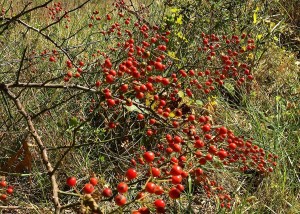Roses. An olfactory and visual delight. How do we keep these beauties safe throughout the winter?
Early December is a good time to winterize your roses. Between now and then, make sure that they are well hydrated. That will help ensure that they are healthy and will prepare them for the challenges of winter.
Pruning roses can help them survive. Remove excessive top growth and remove weak small canes. This will help prevent wind damage. Remove fallen debris and leaves around the bush. Adding a mulch of soil, bark, woodchips or aged sawdust is helpful. You want to form a mound 10-12 inches high and about 18 inches wide.
Timing is important. If the stem of the rose is kept warm and moist, it can cause cankers; it is best to wait until we have several killing frosts before the mulch is applied to prevent that. Treating with fungicide that prevents blackspot can also be helpful, but isn’t mandatory.
 Besides the beauty that roses bring, there are other benefits of growing roses. Petals can be used to make rose water which can be used for cooking or for skincare. Potpourri can also be made using fragrant petals. You can also harvest the rose hips. Rose hips are the fruit of the rose plant and are particularly high in vitamin C. They can be used to make tea, jelly, marmalade, beverages and other recipes.
Besides the beauty that roses bring, there are other benefits of growing roses. Petals can be used to make rose water which can be used for cooking or for skincare. Potpourri can also be made using fragrant petals. You can also harvest the rose hips. Rose hips are the fruit of the rose plant and are particularly high in vitamin C. They can be used to make tea, jelly, marmalade, beverages and other recipes.
With all of the benefits of roses, it becomes even more important that we do our best to ensure that these lovely, beneficial plants survive and thrive after winter. For more information about winterizing your roses, please see the University of Missouri publication: Winterizing Roses

